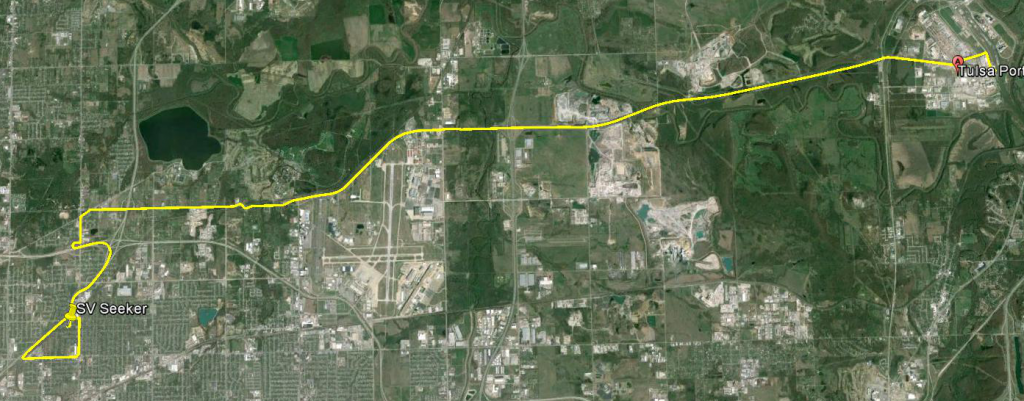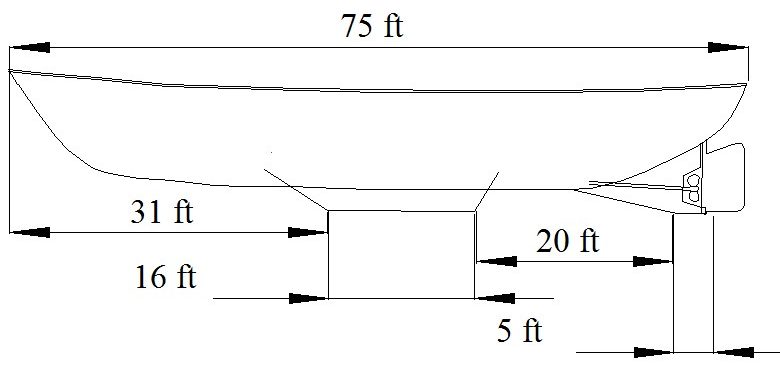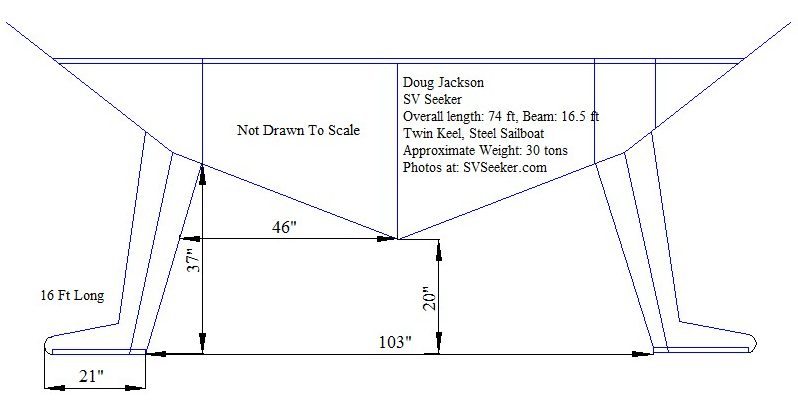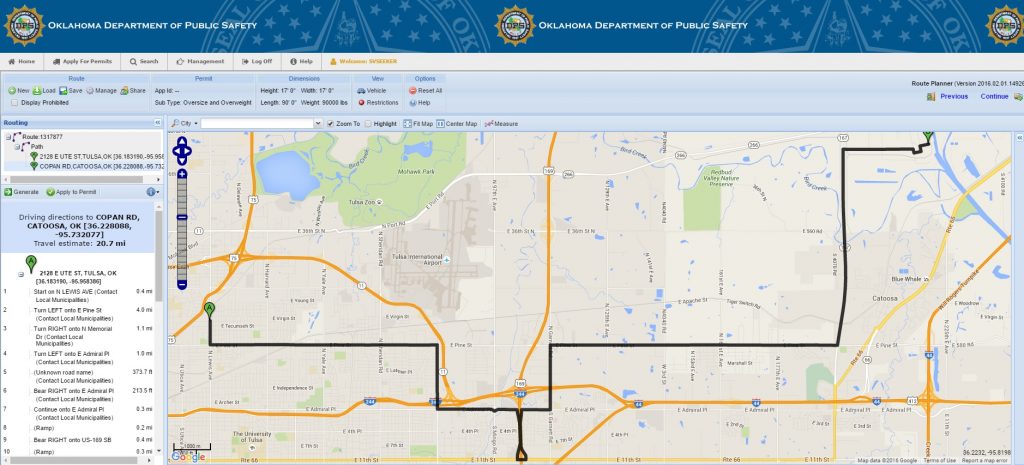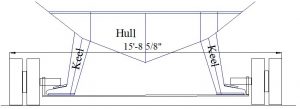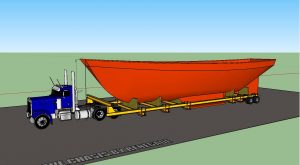I lived in Tulsa, Oklahoma out here on the edge of the prairie for two years before I learned that we are actually connected to the ocean by the MKARNS waterway. We just need to cover the 15 miles between us and the Tulsa Port of Catoosa.
I got out the laser level and carefully measured the boat. The skeg is 1.25 inches lower than the keels. The bow without the bulwarks is a fraction under 16 feet. The aft is 15 1/2 feet. The beam is 22 feet at 13 ft where the catwalks are and 16.5 feet above the catwalks. The move weight will be just under 60 tons.
It turns out that the Oklahoma Department of Transportation is actually first rate when it comes to technology. We may have third world public schools on the north side of Tulsa, but we can get an oversize/overweight permit in the matter of minutes 24/7! Rock on. So after making up some stuff about a truck and trailer it actually gave us a route.
The big question is what kind of trailer will carry Seeker as low as possible under the power and utility lines that are hung at 18 ft above the road and which company. Fortunately Tulsa is a great place to live if you want to move something big. It’s not uncommon to see massive chillers, refinery and oil field equipment traveling down our roads. They make low boy trailers that can fit their two rear axles in the 9 feet available between the keels and skeg, but they are rare trailers if they are not 8 1/2 ft wide and we need something just 7 1/2 ft wide in order to fit it between the keels.
Nick, a heavy haul trucker had the an idea for a simple frame that could make use of the house movers beams and trolleys.
With some help from Tom Belcher we have found that it’s not too difficult to find damaged tandem axles for free. Even better, delivered to us. Tulsa is a great place! So the next idea is to place 2 sets of tandem axles in front the keels. That’s 16 semi truck wheels with frame built between them to hold the boat. Then the rest of the load is carried by the truck.
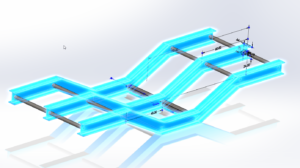
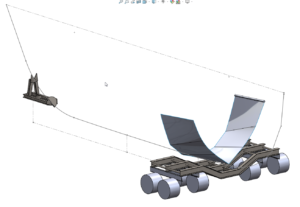 The problems with the initial idea are in the complexity of attaching the axles under the keels. And towing from the aft would require moving the boat so as to allow room for the semi access. After further consideration, we decided on putting the the tandem axle sets without modification, behind the keels and towing from the front. Parker Cline designed a cradle to support the hull between the two tandem axle sets. Together they would support 72,000 pounds or 36 tons. The weight of the boat for transport will be under 60 tons with approximately 35 tons on the tandem axles behind the keels.
The problems with the initial idea are in the complexity of attaching the axles under the keels. And towing from the aft would require moving the boat so as to allow room for the semi access. After further consideration, we decided on putting the the tandem axle sets without modification, behind the keels and towing from the front. Parker Cline designed a cradle to support the hull between the two tandem axle sets. Together they would support 72,000 pounds or 36 tons. The weight of the boat for transport will be under 60 tons with approximately 35 tons on the tandem axles behind the keels.
“The 3” sch40 pipe as a brace checks out with a low stress, and a fine AISC buckling factor of 1.66. I have assumed 3 braces each side, taking the full weight of the tandem 36,000lb/3 – 12,000 each. – Again, trying to be conservative and simple here. We had talked about using 5 per side, attached to each pipe in the hull.
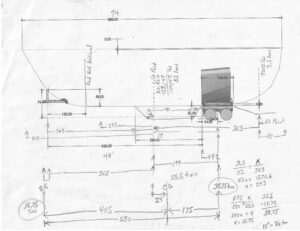 We weighed the boat using a hydraulic jack with a pressure gauge and then did some sketchy math to figure out where the center of gravity was and that the tow truck would carry less than 17 tons and the tandem axle sets at the rear would have less than 40 tons. The limit for heavy loads on a tandem axle set in Oklahoma is 20 tons, so our two sets will be enough.
We weighed the boat using a hydraulic jack with a pressure gauge and then did some sketchy math to figure out where the center of gravity was and that the tow truck would carry less than 17 tons and the tandem axle sets at the rear would have less than 40 tons. The limit for heavy loads on a tandem axle set in Oklahoma is 20 tons, so our two sets will be enough.

